|
“The only way to make sense out of change is to plunge into it, move with it, and join the dance.” ~ Alan Watts It’s often said that the only constant in life is change. But, if that’s true, then why are we so frightened of change when it happens to us? The element of change is what makes life exciting. Afterall, if everything in your life stayed the same all the time, you would eventually get bored and listless. Change also brings new challenges that you will have to overcome. This is actually a good thing because overcoming challenge and adversity is the only surefire way to grow and get stronger as a person.
Another way to view change is to think of your life as a piece of music. If your song only had one note, it wouldn’t be very catchy. In order to make a melody, the notes will need to change. When change happens in your life- and it inevitably will- think of it as the notes changing in your life-song. Instead of resisting change, try dancing to the music of life. When you dance, you don’t think about what moves you just did or what moves are coming next. You also don’t get upset when one note ends and another one begins. You simply release into the flow and let yourself move spontaneously, reacting creatively to the music as it unfolds.
1 Comment
“To have faith is to trust yourself to the water. When you swim you don't grab hold of the water, because if you do you will sink and drown. Instead you relax and float.” ~ Alan Watts To be successful, you first need to believe in yourself. However, belief will only get you so far. To really succeed, it takes faith. Believing in something means that you really hope it's true or you really hope it will happen. The problem with belief is that it leaves room for doubt- there's still a slim chance of failure. With faith, there is no doubt. Faith is the difference between hoping you will succeed and knowing that success is inevitable. When you hope for something, you might hold your breath in nervous anticipation, unsure of the final outcome. When you have faith, you can breathe easily knowing that there is no need for internal struggle, even during challenging times.
If you slow down and tune into your breath for a moment, you'll notice that breathing is an ongoing cycle of tension and surrender- pressure and release. As you inhale, the lungs fill with air and the pressure builds inside until you eventually release into the exhale, and then the cycle starts all over again. Therefore, at any given moment, you are faced with a choice: either hold on or let go. When you resist, you tense your muscles and hold your breath, becoming agitated and upset. Having faith means surrendering to the flow, knowing that life will have its twists and turns, but everything always works out in the end. "Ever since I was a child I have had this instinctive urge for expansion and growth. To me, the function and duty of a quality human being is the sincere and honest development of one's potential."~ Bruce Lee We all have an innate desire to self-actualize during this lifetime- to become the best possible version of ourselves: healthy, wealthy, joyous etc. We also recognize that the process of developing your highest potential does not happen overnight. Real change takes effort and commitment over time. The whole process can seem daunting at first- what exactly are you supposed do in order to win at life?
The truth is, you don't need to master the rest of your life all at once- you only need to master today. When it comes to creating success, what you choose to do today is the only thing that you have any control over- everything else is just wishful thinking. If you can consistently master the day, then pretty soon you will have mastered the week. Keep it up and, the next thing you know, you've mastered the month, and so on. When you commit to doing whatever it takes to have a successful day today, your future success becomes inevitable. The first stage of the spiritual journey is spent searching for the universal source. This leads to the sudden and profound realization that you are not separate from the source energy that you seek, in the same way that a wave is not separate from the ocean. The real journey involves learning how to embody source energy so that you can lead an amazing, fulfilling life in which all of your dreams come true. This is where most people get stuck. What is the best way to embody source energy so that you can live your best life?
A good way to begin is by adopting an abundant mindset. Source energy is infinite and unlimited. When you embody source, you begin to see yourself and your resources as infinite and unlimited too. Unfortunately, many of us are caught in a scarcity mindset where we are always worried that there is not enough- that the supply will eventually run out. This scarcity mentality can take many forms, but it is mainly expressed through our relationship to three aspects of existence: money, time and energy. Let’s explore these three aspects and figure out how to embrace an abundant mindset towards life. 1. You have abundant wealth. How you experience life depends heavily on your mindset. This is especially true when it comes to money. A person who lives in a scarcity mindset is always afraid of going broke. They view money like a child at birthday party who is anxiously watching the cake being cut. If someone gets a large slice of cake, then they worry that they will get a smaller slice, since there is only so much cake to go around. In life, they are always competing for resources, trying to get ahead while actively preventing others from being successful. Someone with an abundant mindset, on the other hand, understands that money is not a limited resource. Deep down inside, they know that there is enough cake for everyone! They live in a state of perpetual gratitude, recognizing that there are limitless opportunities for growth and expansion available to them, both personally and financially. Instead of stressing about money, they are excited about it, knowing that more is always on its way. 2. You have infinite time. Like money, time is another area where scarcity mentality can lurk. We think of time as a limited commodity. We even ‘spend’ time and ‘save’ time just like we do with money. We also mistakenly believe that there is not enough time- that time is running out. This constant feeling of lack can lead to all kinds of unnecessary stress and pressure. The key to tapping into an abundant mindset regarding time is to realize that eternity is right now. The eternal moment is not something that happened long ago, nor will eternity take place at some far-off point in the future. Eternity is right here and now- it always has been and it always will be. The passage of time is one of the only constants in life, so why worry that there isn’t enough? When you align with source, you tap into eternal nature of time, recognizing infinity within each passing moment. 3. You have unlimited energy. Energy is the third aspect of life where a scarcity mentality can affect your ability to thrive. Like money and time, we think of our energy as limited. We try to save energy whenever possible. We really don’t like wasting energy. We often worry that we will run out of energy. We would love to live a more meaningful life, if only we had more energy. Source energy, on the other hand, is boundless. To become one with universal source, you need to recognize that your energy is boundless too. When you embody source, you have an abundance of creative energy flowing through you. This source energy is always here, freely available to you at any time, like water gushing up from a spring inside your heart. You can use this creative energy however you like. Maybe you can channel it to create the life of your dreams! In conclusion, adopting an abundant mindset is the key to embodying universal source and living your best life. This is easier said than done because scarcity mentality can often be deeply ingrained into the psyche. Some people can’t go a single day without worrying about money, or without thinking that they don’t have enough time or energy. The best way to maintain a connected, abundant mindset is to be aware of the times when scarcity comes up. Notice how the thought of not having enough makes your chest tight and your breath constricted. Think of this inner disharmony as a sign that you have lost your connection to source. To quickly reconnect, simply bring a feeling of ease into your body. Relax into the moment, releasing any internal pressure. Breathe and let the source flow through you. Know that you are complete, that you have everything you need, right here and now. As the Holidays approach, there seems to be an increased emphasis on being happy. We all go around saying “Happy Holidays” and “Happy New Year” to each other without ever questioning why. What does it even mean to be happy? This is an important question because, if we don’t understand what happiness is, then who are we to wish it on others?
We have all met a genuinely happy person before- one who appears to always be smiling on the inside. You can recognize them by the sparkle in their eyes, as if they are amused by a secret joke that only they know the punchline to. What is this secret joke and why is it so amusing? How can we get in on the punchline so that our eyes can sparkle too? Here are three ways to be happy right now. 1. Find peace. If you are looking for happiness, probably the best place to begin is by finding peace. We often confuse happiness with ‘feeling good,’ and so we spend our lives in the pursuit of various sensory pleasures. But, unless you find peace within, you will not develop the capacity to experience the present moment. So, you may be eating a delicious dinner but, in your mind, you are already planning what your next meal will be. Only when your mind is at peace can you be fully present with your sensory experience. When you are at peace, you are satisfied with being in this moment- there is nothing else you need in order to feel complete. 2. Lighten up. Happiness is your natural state of being. Therefore, to be happy, you must shake free from whatever it is that is holding you back. As Alan Watts so succinctly puts it, “Much of the secret of life consists in knowing how to laugh, and also how to breathe.” The fact is, no amount of anxiety will ever make any difference to what is going to happen in your life. If you forget this simple truth, you can waste half your time worrying about things that never come to pass. The trick is to let life happen however it may- and then to react lightly to circumstances, regardless of their perceived heaviness. Life doesn’t always need to be a solemn exercise. To quote Alan Watts again, “Man suffers only because he takes seriously what the gods made for fun.” 3. Stop pursuing happiness. Everyone in the world is searching for happiness. We all believe that a time will come when all our needs are met and daily life becomes an unchanging state of bliss. But we are also smart enough to know that this imagined future will never actually arrive. Chasing happiness is like chasing after a carrot on a stick- it may appear that you are advancing towards your goal, but you find that you can never quite reach it. The only way to catch the carrot is to stop pursuing it. Besides, do you really want a life where happiness is the only emotion available to you? At first it would be great but, after a while, you would start craving something different. We are here to experience the full spectrum of emotions, not just the positive ones. As renowned author Glennon Doyle once wrote, “Being human is not about feeling happy, it’s about feeling everything.” This summer, the Caldor fire burned over 220,000 acres of forest just south of the Tahoe basin, destroying over a thousand structures that lay in its path. At one point, when South Lake Tahoe was being evacuated and strong winds were blowing the fire due north, many of us were afraid that our little blue paradise in the mountains was going to be lost forever. Our hearts go out to those who lost their homes and are now having to start their lives again from scratch. We truly owe a debt of gratitude to the brave firefighters who risked their lives to protect this place that we love and cherish.
Although the fire is now almost completely contained, the collective trauma that we recently endured is still very fresh in our minds. We all remember the desperate feeling of impending doom as the fire kept advancing toward us, as well as the weeks of hazardous air quality that made it unsafe to go outside. The anxious feeling of having absolutely no control over what happens next is difficult to shake. But, maintaining a state of inner tension simply can’t be healthy in the long run. How can we go back to enjoying life instead of worrying about it all the time? Here are some of the lessons we learned from living through this tragic event: 1. Understand the cause of stress. We are always hearing about how stress is all in our heads. By only thinking positive thoughts, the theory goes, you will never feel stressed again. But, when there is a massive wildfire advancing towards you, the stress that you feel is very real. Regardless of your ability to look on the bright side, the smell and sight of smoke activates an important survival mechanism. In order to increase your odds of surviving a fire, the body naturally amps you up to do one of two things: either fight against the fire or run away from the danger as quickly as possible. For those of us who stayed in town as the threat of destruction continued to grow, it is perfectly understandable that we were stressed out. Our naturally occurring fight or flight response, combined with our tendency to imagine the absolute worst case scenario- and then suffer from it as if it was real- meant that many of us were walking around on edge, ready to explode at the smallest inconvenience. Understanding why we felt so terrible as the fire was burning is an important step towards recovery. 2. Let go of your attachment to physical things. True freedom comes from being completely unattached to the physical world. When you think about who you are, you generally think, “I am this body.” But, on closer examination, we are so much more than just our bodies. We also identify ourselves with our possessions: our clothes, our computers and TV’s, our cars and our houses. We also cling tightly to our memories and to the things that remind us of our past. Where we live is also a big part of who we are. That’s why, as the fire got closer to home, it started to feel really personal. It felt like it wasn’t just Tahoe that was being threatened with total destruction- it was me. Tahoe is not just my home, it is my heart, my soul- my everything. My attachment to this particular physical world is so strong that, if Tahoe were to burn down, I would be absolutely devastated. The thought of losing this place, along with all of my valued possessions, was almost too much to bare at times. It takes a scare like this to realize just how strong our attachment to physical world is- and how much inner work remains before we can truly be free. 3. Release the need to control. An important lesson that came out of all this is the realization that the only thing we have control of is ourselves. When the fire was raging out of control, it was easy to go into a state of resistance to what is. This fire clearly should not be happening, therefore there must be some way to go back into the past and stop the blaze before it gets a chance to spread. If that isn’t possible, then perhaps we can use the power of our thoughts to put the fire out. Or, maybe if we pray fervently enough, the rain will come and miraculously extinguish it. In reality, there was absolutely nothing we could do about the wildfire except wait and watch as nature took its course. We learned that it is not our ability to control life’s events so much as our ability to control our internal reaction to life’s events that determines our long-term health and happiness. There are many other lessons learned from this tragic event such as the value of clean, fresh air. We also learned the importance of acting with kindness towards others when we were all under the same intense pressure. The thing to keep in mind is that, although we came very close to losing everything- we didn’t. The worst case scenario that everyone was afraid of did not come to pass. Remembering this gives us the opportunity to replace feelings of panic and desperation with a baseline feeling of gratitude and appreciation. It’s the difference between living with an open heart instead of one that is still closed and afraid. On the days when the air is clear and the sky is blue once again, we have even more reason to rejoice in the natural beauty of our surroundings and remember how lucky we are to be here. This blog is dedicated to our beloved dog, Ralphie Roo, who died earlier this year after complications with cancer. People would often describe Ralphie as an ‘old soul.’ He had a look in his eyes of inner calm and timeless wisdom. Behind those soulful eyes, you could tell that there was an aware, conscious being. Ralphie was more than just a good boy who loved hiking, adventures and cuddles- he was also a Zen master. Here are six lessons that my dog taught me about conscious living:
1. Be in the moment. Ralphie’s conscious awareness was grounded in the here and now. He innately understood that the present moment is all there is, and all there ever will be. His mind was free from the trappings of the ego, enabling him to fully immerse his senses in the world around him. He didn’t waste his mental energy regretting the past or worrying about what the future might hold. He lived his life in a peaceful, Zenlike state- fully alive and present to what is. He calmly witnessed life with his eyes and ears open and his heart and mind at rest. 2. Connect with nature. Ralphie went on a walk outside every single day of his life. For him, being out in nature was pretty much the whole point of existence. He loved being outside because, if you think about it, dogs are a part nature. They are not separate from it because they essentially are it. We humans are also part of nature, a natural expression of life. We are also ‘it,’ although we mistakenly believe that we are separate from the environment that we live in. The illusion of separation from the natural world is all too common these days. A walk in the woods not only reinforces your connection with nature but, in a way, it reinforces your connection with yourself. 3. Express yourself. The ability to express your emotional energy, rather than keeping it bottled up inside, is key to psychological health. Tragically, too many of us will pass away with our ‘song’ still in our hearts. Not Ralphie Roo though. Part of his daily ritual was to throw back his head and let out a heart-rending howl. He sang with passion from the very depths of his soul, expressing all the joys and sorrows of the world. He howled for no apparent reason, other than it made him feel really good inside. When he howled, he felt alive and free- resonating with the howls of the wild dogs in his ancestral lineage. He sang proudly and at full volume, without a hint of self-consciousness. And then, having shared his heart-song with the world, he would lapse back into contemplative silence until the spirit moved him again. 4. Appreciate existence. Life is not supposed to be a chore, it’s supposed to be a celebration! Ralphie woke up with the sun every morning excited to start a new day. He was never bored or dissatisfied with his lot in life. As long as he had his breakfast and his morning walk, he was good to go. For Ralphie, daily existence meant unbridled joy, followed by food, followed by deep relaxation and blissful sleep. If we could emulate this pattern in our own lives, we’d all be better off. 5. Find happiness within. Ralphie only had one possession: his collar. He didn’t need anything else to be happy in life. We waste so much time believing that happiness comes from owning certain things. Furthermore, we believe that we won’t be happy until we obtain these things. But, you really don’t need anything to be happy because happiness starts on the inside. If you want to be happy in life, then start today. Start right now. Happiness is not some imaginary time in the future that you will arrive at one day when you finally have all the things that you need. Happiness is the realization that you are already there, that your emotional state does not depend on anything or anyone else. Don’t wait a lifetime to be happy, only to discover that happiness was available to you all along. As the Chinese philosopher Chuang Tzu put it, “Happiness is the absence of striving for happiness.” 6. Reach total oneness. Ralphie was a really good meditator. He would always find the coziest place in the room, assume the most comfortable position- moving cushions and pillows into place if necessary- then he would let out a deep sigh and settle in. His eyelids would eventually close, and he would drift off into another dimension. He spent the majority of his time in this superconscious mental state that I can only describe as “Samadhi”- defined here as “the highest state of mental concentration that one can achieve while still bound to the body, which unites them with the highest reality… a state of profound and utterly absorptive contemplation of the Absolute that is undisturbed by desire, anger, or any other ego-generated thought or emotion. It is a state of joyful calm, or even of rapture and beatitude.” Although Ralphie is not physically with us anymore, there is no doubt that Ralphie’s consciousness is once again united with the highest reality- merged with the absolute. We miss his steady, calming presence, but the most powerful emotion we have these days is gratitude. Thank you, Ralphie, for coming into our lives and showing us what it means to embody peace, joy and unconditional love. Thank you for the reminder that life is short, and that our time here is precious. Above all, thank you for your loyal companionship. Rest in peace, Ralphie Roo. We love you. When it comes to new age spirituality, there are many different paths you can take. Regardless of the method you choose, it appears that the ultimate goal of any given spiritual path is achieving an all-pervading sense of oneness. Not just oneness with yourself, but with the Universe, with God… with all that is.
The spiritual journey is about first discovering the intimate connection you have to your natural surroundings, then coming to realize that this world, and everything in it, is an extension of the Divine. You begin the path feeling isolated and alone, separate from your surroundings and alienated from others. The path ends with feelings of connection, wholeness and unification with all of existence. What, exactly, is this feeling of oneness all about? And, how can we bring about such a favorable state of mind? Here are three simple ways to become one: Be One with Yourself When you are no longer divided on the inside, you will be at one. The quest to find your true self comes to an end the moment you realize that the person who is doing the seeking is the one that you are looking for. Perhaps the simplest way to understand oneness is to extend your right index finger. Then, using only that finger, try to point to the tip of your extended finger. If it doesn’t work at first, try pointing harder. In the same way, we waste precious time searching in vain for our true selves. It’s like switching on a flashlight in a dark house and then spending the whole night searching for the source of the light- unaware that you have been holding the source in your hand the whole time. What would it be like to be at one? For starters, I imagine it would be very quiet inside your head. If you were really at one, you wouldn’t need to express your stream of consciousness in verbal form. Instead, you would instantly know what your thoughts are, right as they occurred. The little voice inside your head would finally be able to rest, since talking to yourself implies that there are two of you - one that’s doing the talking, and one that’s doing the listening. Likewise, a person who is at one would never need to hesitate or second guess themselves. They would move easily through the world, always taking the path of least resistance, like a stream flowing effortlessly down a gulley- never paralyzed by indecision, worry or regret. Finally, a person who is at one has necessarily come to terms with being a human. Therefore, they wouldn’t need to spend time and energy trying to be anything else, other than who they genuinely are. Be One with the Universe In order for conscious life to happen, there needs to be certain elements present. The first thing you need is space. After all, nothing can take place unless there is first space for it to take place in. Another essential element is light. In our case, we have the Sun- a sphere of pure energy, radiating light and heat. But, just having a bunch of stars, shining out into empty space, is not enough for conscious life to occur. For that, we also need physical matter to exist. We need spherically shaped planets to form out of this matter at just the right distance from these radiant stars. Then these planets need to develop water, fertile soil and abundant plant life. You also need the element of time so that nature can learn to thrive and to evolve. This process of evolution needs to continue for millions of years until conscious life develops. That is where we come in. Human beings have evolved in order for the Universe to become aware of itself. After all, what would be the point of a Universe without any beings to experience it? Sure, the Universe would still be here. Earth would still exist and it would no doubt be beautiful. But, without anyone around to appreciate it, it wouldn’t really matter all that much. That’s because, for experience to happen, there needs an experiencer. It is our presence on Earth and our experience of life that makes the world exist. As experiencers, we play a key role in making physical reality come into being. An orange tree can grow up and produce fruit, but the actual, sensual experience of eating the oranges is what makes the fruit so sweet and delicious. Similarly, our ears sense vibrations traveling through the air and turn them into audible sounds. Our nose allows for a flower’s scent to be experienced, just as our sense of touch determines if a given surface is rough or smooth. To be at one with the Universe is to recognize the central role we play in existence. By bringing physical reality into our awareness through the five senses, we make experience happen. Be One with God Let’s go back to the elements listed above that are necessary in order for conscious life to exist: space, light, time, physical matter, water, nature, evolution, consciousness. Considering all of these elements, which one would you say is divine? Some claim that the light is divine, others say that the divine is the space in which everything occurs. Others might insist that God is nature or that consciousness is the true driving force behind all of life. My question is: why does it have to be limited to one thing? Why can’t it all be God? After all, no one element is superior to the others. Light is not more important than space; time is not more important than matter. Rather each element is an essential part of an interdependent web- one in which each element is of equal importance in order for the experience of life to occur. Being one with God means recognizing that the Universe is the real miracle. Many of us believe that the life we are living through now is not the miracle- that the real miracle comes later on, after we pass away. While that may still be true, it shouldn’t take away from our ability to appreciate how special physical existence is. Spirituality is typically about paying homage to the intelligent, creative, invisible force that drives the process of existence. What many of us are missing is that the manifest world of physical form is just as worthy of our respect and reverence as the formless world of spirit. You can spend a lifetime searching for God, not realizing that the truth was right there in front of your face the whole time. The simple truth is that this is God. This Universe, this Earth, this Sun- you, me, this human experience that we are having- this is it! When you come to realize that you can’t possibly be separate from it, because you fundamentally are it, you will be at one. We often hear about how we are living through unprecedented times. However, it’s important to recognize that we are also living through incredibly stressful times. Not only do we have to deal with the fear of an invisible virus that continues to spread unchecked throughout the country, we also have to contend with the anxiety of economic hardship, social unrest and political uncertainty. Let’s face it, life seems to be completely out of control right now and nobody really knows what is going to happen next.
In times like these, it’s best to not let the imagination get carried away. This is especially true for those of us that obsessively imagine the worst case scenario. We waste so much of our precious mental and emotional energy forecasting disastrous outcomes that never actually take place. There are enough ‘real’ problems to worry about right now without also having to worry about everything that ‘might’ happen. All we can really do is cultivate a feeling of inner ease as we allow events to unfold as they may. What else can we do to keep our inner balance during these intense and unpredictable times? Here are three simple ways: 1. Equalize. Cultivating a relaxed inner disposition towards life begins by recognizing what stress and anxiety feel like inside the body. Stressed people will often complain that they are under immense amounts of ‘pressure.’ This internal pressure can feel like you are being physically crushed, as if every cell in your body is being pulled inwards towards the center. There are healthy ways of releasing this internal pressure, such as exercising. There are also unhealthy ways of ‘blowing off steam’ like getting drunk and punching things. Regardless of the coping mechanisms we employ, we naturally seek to release pent-up pressure and return to a neutral, balanced internal environment. A simple way to achieve equilibrium at any given moment is to consciously equalize your internal pressure. The next time you are feeling anxious, notice the amount of pressure you feel on the inside of your body and compare it to the pressure that is present in the atmosphere. To equalize, simply breathe until the pressure you experience internally feels equal to the ambient pressure of your immediate surroundings. When there is no pressure differential experienced between your internal and external world, you will find yourself at peace. 2. Have faith. As we discussed earlier, much of our stress comes from imagining troubling future scenarios and then suffering from them as if they were really happening. However, it is unrealistic to believe that we will one day stop imagining what the future might be like. Anticipating what is going to happen next is the nature of the mind. It’s not a problem until you realize that the horrific futures that you keep envisioning are frying your nervous system. This is because imaginary futures can either be heartwarming or bleak depending on whether you are coming from a place of faith or a place of fear. We must to learn to use our imagination more effectively, since it clearly doesn’t serve us to be anxious all the time. I used to think that predicting the future came down to a choice between hope and fear- that one can either hope for the best or fear for the worst. But, nowadays, I think I’d rather have faith than hope. I feel like hope still contains a trace of doubt whereas faith feels far more certain and concrete. Having faith implies that you know, deep down in your core, that everything is going to be alright- no matter what happens next. Hope is more like when you wish really hard for things to work out a certain way. With faith, there is no room for doubt. It is the difference between hoping everything will be ok and knowing everything will be ok. 3. Unplug. With so much going on these days, it’s hard to keep up with all the things that we are supposed to worry about. To remedy this, many of us are addicted to the media, eager to check out the latest headlines just in case they trigger an emotional response. A constant flow of bad news keeps stress levels up and our panic mode activated at all times. It keeps us glued to our devices, feeding our awareness a steady diet of fear and anxiety mixed with a little anger and just a touch of despair. Over time, we become addicted to certain stress hormones like adrenaline and cortisol that get released into the bloodstream every time we emotionally react to the media we are consuming. We begin to crave the news, checking it the first thing in the morning and the last thing at night and every spare moment in between. We mistakenly believe that staying informed and up to date about all the little details of a particular story somehow enables us to control the outcome. Meanwhile, 90% of the news we ingest is ‘bad’ news, designed to keep us in a vibration of fear so that we keep coming back for more. The truth is, you don’t need to be plugged-in to lead a happy life. You can easily break free from a media addiction by deciding not to get caught up in the drama anymore. Yes, it’s important to stay informed about current events, but that doesn’t mean you have to spend your whole day as an emotional wreck. If you are at the point where the news is tearing you apart inside, then it’s probably time to take a step back and reevaluate your focus. When you unplug from the constant stream of media, you create space inside your awareness. It’s in this space, free from all the generated fear and distractions, that you are able to comprehend the infinite peace of your true self. It has been three months since we shut down Well Being as part of a collective effort to slow the spread of CoronaVirus. Since we are planning on reopening soon, it seems like a good time to reflect upon what we have learned during our hundred-day hiatus. It wasn’t easy at first, having to press the pause button on life and shelter in place. Having spent the last seven years focused on work, it was a little daunting to be faced with a seemingly endless amount of unstructured time. With so much uncertainty in the air, it was tempting to get lost in the various fear-based emotions. However, it quickly became clear that being nervous wasn’t helping the situation to improve. So, instead of fearing for the future, we redoubled our commitment to enjoying the present. Here are some other things we learned over the last three months of quarantine:
1. Stay rooted in your center. One thing I realized about myself during this whole crisis is that, just because the world is in chaos, doesn’t mean that I have to be in chaos. Being an empathetic person means that you have the ability to imagine yourself in the situation of another person, experiencing their struggles and emotions as if they were your own. Empathy is generally considered a positive trait because it helps you to identify with others, but it can also be unhealthy if it’s done without awareness. For example, when you read a news article about a terrible thing that happened somewhere in the world and it feels as if that terrible thing just happened to you. Then you begin to suffer as if you were one of the actual victims of the tragedy. Or perhaps you watch a video of angry people acting violently and destructively and now you find yourself filled with anger and violent impulses. I am not saying that it is better to be emotionally aloof towards other people’s struggles, but it is important to recognize when you are taking on other people’s emotions and mistaking them as your own. When this happens, the trick is to simply come back to center. See yourself as the eye of the hurricane- the calm, unmoving witness at the center of the storm. You can still have compassion for other people’s hardships, but you don’t need to make yourself suffer on their behalf. 2. Release your control. At this time there are so many problems in our country and throughout the entire world that, when you start thinking about it all, it can get a little overwhelming. The reason it gets overwhelming is that your mind is programmed to be in problem-solving mode. That’s what the mind does: it sees a problem, analyzes it, and then tries to come up with a solution to the problem. The situation we are in right now is increasingly complex- there is no denying that the we have major problems to solve, however it might come as a huge relief to know that you are not in charge of fixing the world. Sure, there are some things in life that you can fix, but a global pandemic is not one of them. So, let it go- nobody is counting on you to be the one who solves this anyway. Carrying the weight of the world on your shoulders may seem like a noble act, but it is only going to wear you out in the end. 3. Live your purpose. As much as I’ve enjoyed my three months off, I am looking forward to working again. Not because I am bored, but because running our business is what gives my life purpose. Basically, Well Being is the best thing I can do, right now, to bring more love and light into the world. And it’s important to have a purpose in life, otherwise you are just kind of killing time, keeping yourself fed and entertained until you fall asleep, then waking up and doing it all over again. Don’t get me wrong, I love having free time, but to have ‘free’ time there needs to be time that is not ‘free.’ I believe that what you do with your time here on Earth, the impact that you make on the world and on other people, that’s the most important thing there is. I’m not really sure how reincarnation works, but there is a very real chance that this is the only shot you get at being alive- so, you might as well live your purpose while you are here. We are living through an unprecedented time in human history. Due to the threat of the Corona Virus, we have all been ordered to shelter in place. At this moment in time, practically the entire world is on lockdown. Life, as we once knew it, has come to a sudden stop. There is understandably a great deal of fear and uncertainty in the air. People are literally afraid to take a deep breath.
The hardest part is not knowing how long this event will last or if things will ever be the same again. Many of us are stuck at home right now with nothing to do, and it can be challenging to stay positive as the days go by. Instead of focusing on all the drawbacks of our current situation, let’s see what happens when we look for the silver lining in all of this. Silver lining #1- Free time. A common complaint I hear from people is that there just isn’t enough time to do all the things they want to do. If only they had more time, then they would finally be happy. Well, here you go… here’s a whole bunch of time… are you happy yet? Now you’ve finally got time to do all those things you’ve been putting off until later. Remember that novel you were going to write? Or that artwork you were going to create? That project you’ve been putting off for when you had some free time? Well, now might be the perfect time to get started on that. Seriously, if not now, then when? Silver lining #2- No rush. Did you ever notice how much of life is spent being in a hurry? It’s like the whole world is in a rush to get things done. Everyone’s going full throttle, gripping the steering wheel tight, trying to make it to their next appointment on time. Remember what it was like to have an appointment? Remember when it actually mattered what time of day it was? Ever since this lockdown event began, it’s like time has been standing still. There is no hurry to get anywhere because there is nothing going on, anywhere. The rush is finally over. Let’s appreciate this feeling of timelessness while it’s here. We have been given the rare opportunity to temporarily step out of the rushing current and experience a different relationship to the passage of time- one that is based upon the principles of stillness and presence instead of the constant motion and excessive consumption that drives modern life. Silver lining #3- Metamorphosis. There is a certain time in a caterpillar’s life when it decides that it’s time to go inside a cocoon for a little while. Weeks later, it emerges from this self-imposed isolation having undergone a profound transformation. Granted, this period of isolation that we are going through is not exactly self-imposed, however we are all being forced into our own ‘cocoons’ for the time being. You can either spend your time fretting about your current circumstances and worrying about the future, or you can treat this time as an opportunity for personal transformation. This lockdown is a fact of life and there is nothing you can do about it except wait it out. Just know that someday this will come to an end and you will be free to go out and live your life again. Who you are mentally, physically and spiritually when you emerge from your ‘cocoon’ will be a direct reflection of how you spent your time while in isolation. Like it or not, you are being forced to go through a metamorphosis right now. Whether or not you emerge as a beautiful butterfly at the end of all this is entirely up to you. As a new decade begins, we have a golden opportunity to reinvent ourselves. As a result, many of us are setting positive goals and striving to become better people. “New year, new me!” as the saying goes. However, we are often disappointed when, several days in, we come to the realization that nothing has changed. We tend to forget that change is not a process that happens to us spontaneously. We mistakenly wait for ‘things’ in our life to change but ‘things’ aren’t capable of change… real change only happens when we change. How can we maintain a commitment to living a healthier, more positive life in 2020? Here are some suggestions that may help as we all strive to become the best possible version of ourselves.
1. What you do today is the only thing that matters. You are only capable of living one day at a time so, when it comes down to it, what matters the most is what you choose to do today. If you are serious about making positive changes in your life, then the best place to begin is right now. By my calculations, there are a total of 87,600 hours in a decade- so claiming that there isn’t enough time to be healthy is just another excuse. The fact is that you have plenty of time, it’s just a matter of prioritizing that time in a way that promotes your well-being. Ultimately you are faced with a choice, you can either spend your time cultivating wellness today or you will have to spend your time battling against disease later. Life is short. How would you rather spend your time? 2. Respect your future self. Your current daily habits determine the person you will become in the future. How are you going to feel ten years from now? The truth is, unless you can change your daily habits, then the next ten years are going to be very much the same as the last ten years. If you are cultivating health and strength on a daily basis, then you will continue to be healthy and strong. Conversely, if you continue to indulge in self-destructive behaviors, then you will continue to self-destruct. That’s just the way life works. Your current state of wellness is the cumulative result of the daily habits you employed in the past, whereas your future state of wellness relies entirely upon the decisions you make in the present. So, if you need extra motivation to maintain your commitment to an exercise routine or to a healthy diet, think about your future self and do it for them. 3. Your life lessons will continue. Just because you have decided to become the best possible version of yourself doesn’t mean that life will stop throwing various challenges at you. How you choose to react to these challenges is a measure of your spiritual and emotional growth. Certain life lessons will occur again and again until such time as you are able to react differently to them in the moment. I recently came across a quote that succinctly sums up my point: “The most important spiritual growth doesn’t happen when you are meditating or on a yoga mat. It happens in the midst of conflict- when you’re frustrated, angry or scared and you’re doing the same old thing, and then you suddenly realize that you have a choice to do it differently…” -Anonymous That’s not to say that yoga and meditation are not important to your spiritual growth. But how you react in the moment to real life challenges is a reflection of your ability to embody that spiritual growth. Spiritual practices can help you cultivate inner peace and equanimity, but the real test takes place when life's various challenges arise. Regardless of the circumstances you face, there is always the option to sink below the level of resistance and turmoil and reside inside the eternal peace of your being. 4. Nobody is perfect. In the quest to become a better version of yourself, it is important not to get caught up in the impossible task of perfection. No matter how many hours you dedicate to making yourself perfect, you will never arrive at a satisfactory end point. There will always be room for improvement. Think of it this way: in order to play a melody, an instrument needs to be in tune. However, at a certain point, musicians will stop tuning up their instruments and begin to play them. Likewise, you can get so involved in the process of bringing your being into perfect tune that you forget the whole point- which is to create beautiful music while you are here. It is said that a single thought can change your entire life. If that’s true, then I would like to know what that thought is, so that I can think it. What single thought is so powerful that, after having it, your life is irrevocably changed for the better? It would have to be a thought that gets all the way down to the very essence of your Being- a thought so great that it somehow allows you to escape from the oppressive grip of existence. This thought would have the effect of freeing your mind, releasing all internal pressure while increasing your capacity to experience joy in this world. Does such a thought exist? It’s certainly worth looking into. Meanwhile, here are three thoughts to ponder that may or may not change your whole life forever.
1. At any given moment, you are either inhaling, exhaling, or holding your breath. And that’s it… those are the only three options to choose from. Admittedly, there are some didgeridoo players out there that have mastered the art of circular breathing, somehow managing to take a breath in while breathing out at the same time. But, for the vast majority of people reading this blog, these are the only three options available to you. Come to think of it, which one are you doing right now? Try keeping this simple yet effective thought in the forefront of your awareness throughout the day. Regardless of the circumstances you encounter, ask yourself, “Am I breathing in right now or am I breathing out?” You will be surprised how often you catch yourself holding your breath, especially when life gets stressful. But you’ll also find that it’s very difficult to get stressed out when your chest is relaxed, and your breath is gently flowing in and out. Experiencing less stress means that you will be less tired at the end of the day. By breathing fully, you oxygenate your blood, which sustains your energy throughout the day. Remember, it’s perfectly okay to catch yourself holding onto your breath, it’s simply another opportunity to let go of the pressure in your internal environment- either into the expansion of an inhale or into the release of an exhale. 2. There is only today. Sure, yesterday happened. There is no denying that. But, yesterday is a memory. At the time, I remember thinking that it was today. Likewise, tomorrow is definitely going to happen, but tomorrow exists only as a concept, not as anything material. We never get to actually experience tomorrow because, when we finally arrive there, we find that it’s today again. It’s important to remember this, lest you get swept up in regret. We tend to ruminate on the past, wishing we could have done things differently. “If only I could go back and change a decision that I made five, ten, twenty years ago, then everything in my life would be so much better.” But the fact is, you only get today- there’s no going back into the past and changing things. The past is gone anyway, you can’t go back there because there is nothing to go back to- there is only this. The way that things happened in the past is the only way they could have possibly happened in order to get you to this moment right here. You can free up so much mental and emotional energy simply by accepting the way that your life has unfolded up until this point, releasing the false notion that it could have gone differently. 3. You don’t get to live forever. When you think about it, existence is inherently bittersweet. As wonderful as it is, it doesn’t go on forever and ever. Like all good things, it must come to an end. We only get to experience about eighty or ninety trips around the sun here in the physical plane and then it’s time to move on. It doesn’t seem fair at first- why do we necessarily have to die in order to experience life? However, knowing that your time here is limited is precisely what makes your time here so precious. Besides, if all life went on forever, not only would this planet be completely overrun with people, but we would all eventually get sick and tired of being here. Because our life is finite, we can value and appreciate what it means to be alive. Keeping your mortality in mind helps prevent you from taking your life for granted. I’m not certain how it all works, but I’m pretty sure that a human birth on the physical plane is one of the greatest things that a soul could ever experience. Keep in mind that, even though this life has to one day come to an end, it’s still the best thing that could ever happen to you. Are you a spiritual person? Many people believe that they are on the ‘spiritual path,’ but few of us pause to consider what the path is or where it actually leads to. There is a vague notion that the path winds its way up a mountain, at which point everything melts into light and you experience the highest level of consciousness there is, aka- Enlightenment or Nirvana. Others see spiritual awakening as more akin to the blossoming of a lotus flower- a metaphor that suggests a slow and gradual expansion of awareness that grows outwards from the center of your being. Regardless of the metaphors we use, there is reason to investigate our understanding of spirituality. What does it mean to be a spiritual person?
1. A spiritual person believes in a higher power. Probably the most common trait of a spiritual person is that they believe in a Divine source. The idea of the Divine is no longer limited by any fixed belief system. Being spiritual in the West used to mean that you believed in God, a gigantic old man with a long white beard who sits upon a golden throne in Heaven. We imagined the Divine source of all creation to be a benevolent grandfather who would listen to our prayers, control the daily weather patterns and watch from above as we lived our lives- passing judgment on the morality of our actions. These days, a different understanding of God is emerging in the spiritual community, thanks in part to an influx of spiritual truth from Eastern religions like Buddhism and Hinduism. As a result, the image of 'God the Father' has been replaced by a deep reverence for ‘the Light’ or ‘the Source’- the mysterious life force that runs through all of existence. A spiritual person sees themselves as a manifestation of the same formless, creative power that brought the stars, the planets, and all of nature into existence. They recognize that the universe is, essentially, the Divine spirit in physical form. As a result, they see the Divine everywhere they look, not just in churches and temples, but in the mountains and the canyons and in the spark of light inside our eyes. Spiritual people are able to comprehend that this whole life thing that we are all going through is, in fact, Eternity- it’s just cleverly disguised as the everyday, ordinary world. 2) A spiritual person has a spiritual practice. In order to be considered a spiritual person, you kind of need to have a spiritual practice. Who you are in this world depends largely upon what you do while you’re here. For example: an athlete is someone who participates in athletics, a singer is someone who sings, and an artist is someone who creates art. A spiritual person, therefore, is someone who practices spirituality. Whether it’s through daily yoga, meditation, prayer, tai chi, qigong, the studying of spiritual texts or the chanting of mantras- a spiritual person will take the time to connect with the Divine, creative energy of the universe by actively cultivating peace, vitality and vibrant wellness within. A spiritual person believes that their body is a temple for Divine energy to flow through. Their spiritual practice tends to be part of a larger self care routine, with the goal of fine-tuning their physical form so as to more fully embody Divine energy. They recognize the sacred nature of consciousness and they see the value of taking time to quiet the mind in order to cultivate inner peace and resonate with their higher self. They see their place in the fragile web of life and they try to do whatever they can to make this world a better place while they are here. 3) A spiritual person is peaceful and happy. There is no point in taking the spiritual path if you find that it’s making you miserable. In fact, a good way to check if you are on the right path is to ask whether or not your spiritual practice is making you feel more harmonious inside- content to simply be alive and awake, here in the present moment. Some spiritual people carry an air of tranquility with them wherever they go. Perhaps their unshakeable peace is due to a deep understanding of the nature of reality. Or perhaps it’s because they are able to breathe, fully and consciously, in a world in which everyone else seems to be holding their breath in anticipation of what comes next. A spiritual person attempts to move through life without hesitation or internal resistance, reminiscent of the way water flows effortlessly down a gully. That doesn’t mean that they never get upset or express negativity, but it does mean that they are willing to learn and grow from their experiences, both good and bad. In conclusion, a spiritual person is someone who has reverence for, and strives to resonate with, the Divine- both within oneself and within all. There are many different paths that you can follow to get to the proverbial mountaintop- there are no wrong paths because, ultimately, they all lead to the same place: the heart center. Maybe that’s why we instinctively place our palms together at the chest when it’s time to pray. The Divine frequency that we attempt to connect with when we hold our hands in prayer is the same as the frequency of love, a vibration that emanates from the heart center. When spiritual people act with loving kindness towards themselves and others, it's because they are behaving the way that love would behave. There are people who dedicate their lives to studying the ancient texts, looking for a formula to follow so that they might experience a single instance of ecstatic oneness. However, you can possess all the spiritual knowledge in the world and you will still have to live your life one day at a time, just like everybody else. Likewise, you can meditate in a cave for twelve hours a day and you will still find yourself right here, rooted forever in the present moment. Love it or hate it, this is the human experience- and there is no escaping it. However, if this moment really is all we've got, then right now seems like the best place to begin a spiritual quest. Any journey you can take begins and ends right here in the present moment. With this in mind, the spiritual journey can be best thought of as a loop, one that constantly sends you back inwards towards the center of your being and the sacred presence of the eternal now. My wife and I recently left our little blue paradise behind and ventured out on a road trip through Utah’s red rock country. We visited all five national parks in ten days, driving over 30 hours from Lake Tahoe to Moab and back. Along the way, we spent countless hours exploring some of the most surreal landscapes on Earth. After trudging around in the ice and snow every day for the last four months, we were more than ready for a change of scenery. Hiking in the red desert among towering hoodoos turned out to be the perfect antidote for our simmering cabin fever. Taking in so many incredible sights has deepened my appreciation of the inherent beauty that exists in the physical word. Also, standing on the edge of various death-defying rock precipices has inspired a whole new understanding of the word ‘awe’- defined here as: “a feeling of reverential respect mixed with fear or wonder.” The word ‘awesome’ gets thrown around a lot these days but, in this case, I believe it is the correct adjective to use when describing this experience. Now that we are back at home, there is a rekindled sense of wonder inside my heart. They say that traveling is good for the soul and, after taking this journey, I can understand why. Here is why traveling is so essential to your overall well-being: 1. Traveling makes you appreciate the world you live in. The universe is an infinitely weird and wonderful place made up of countless stars and planets. We take it for granted that Earth is our home, but we really should take the time to look around and appreciate what an amazing planet this is. Scientists estimate that there are over 30 billion planets in the Milky Way galaxy alone, and that there are over 100 billion galaxies in the observable universe. When you consider the astronomical odds, it’s clear that we are blessed to be here on Earth. I may be a little biased, but this has got to be one of the best planets out there. We’ve got it all: oceans, mountains, rivers, deserts, canyons, lakes- not to mention all the beautiful flora and fauna that’s here. As far as planets go, it really doesn’t get any better than this. You could spend a lifetime searching the galaxy for a better place to call home, but I don’t think you’ll find a more aesthetically pleasing planet than the one we are already on. 2. Traveling makes you happy to be alive. Nobody knows why we are alive on Earth right now. Life is the great, unsolvable mystery that we all face. In the end, there’s not a lot you can do about your existence- you’re basically here whether you like it or not- so you might as well enjoy the ride. However, I find that nothing makes me appreciate being alive more than coming face-to-face with the prospect of my own demise. Fortunately, this trip offered me the perfect opportunity to be genuinely afraid for my life. The moment in question occurred halfway along a tall, narrow rock spine in Zion canyon. There I was, clinging to a metal chain, flanked on the left and right by thousand-foot drop-offs. I looked up at the towering rock spine ahead of me and I couldn’t believe that I had to go up there. An ice-cold liquid slowly spread from my chest throughout my whole body. I felt temporarily frozen in time and space, unable to take a step forward or backward. My legs, already exhausted from the long hike to the top, had apparently turned into rubber. I quickly recognized that I was facing one of the biggest fears of all- the fear of death. I took a deep breath and considered my options. In a situation like this, there are really only two choices: feel the fear and decide to turn back, or feel the fear and do it anyway. I figured that, even if I did fall to my death, at least people could say that I died doing what I loved. I eventually pushed on, clambering to the top and feeling very much alive and invigorated in the process. Challenges such as this, when death is a real possibility, force you to recognize just how much value you place on your own existence. I am not ashamed to admit that I was scared up there because I feel like fear is a very natural response to have in those circumstances. Fortunately, in my moment of wavering resolve, I recognized that my fear of death was simply an indication of how much I enjoy my life. It turns out that I really, really like being alive. Fear is always thought of as the enemy but, by recognizing where the fear stems from, you can prevent it from having a paralyzing effect on you. Besides, if it weren’t for the fear of death, getting to the top wouldn’t be nearly as much fun. In conclusion, the reason traveling is so essential to your well-being is because it allows you to appreciate the miraculous nature of reality. Traveling takes you out of your comfort zone and allows you to see the world from a higher perspective. We didn't come into this world from someplace else, we were created by the Earth itself. The same mysterious force that created the sun and the moon and the stars also created you and me and everything else you see. Perhaps the best way we can honor the Creator is to venture out into the natural world and marvel in wonder at the beauty of Creation. Smartphones were introduced to the public a little over ten years ago and, in that time, they have completely taken over our lives. It is now considered normal to carry around a miniature computer in our pockets that is millions of times more powerful than every single computer that NASA used during the lunar landing in 1969, combined. The smartphone has quickly become our most precious possession, causing a mild panic attack whenever we can’t locate it right away. It’s our camera, photo album, calendar, calculator, alarm clock, music player and GPS navigator. It’s also our means of communication via text, our primary connection to social media platforms, and our daily source for news, weather and silly cat videos. Some people have even reported using their phones to make real, actual phone calls. With all the benefits that the smartphone brings to our lives, it’s hard to imagine any downside to having one. However, spending too much time on your smartphone has been shown to have a negative impact on your physical, mental, emotional and spiritual life.
Using your phone is not necessarily a bad thing, but these days we are spending way too much time staring down at our devices. My research revealed that, on average, we check our phones 150 times a day, or once every six minutes. It’s gotten to the point where we are currently spending an average of 3 hours a day looking at our phones, an average that is increasing annually. Something needs to be done to reverse this unhealthy trend before it’s too late. Let’s examine the various ways in which smartphones can negatively impact our lives and see what, if anything, we can do about it. 1. Physical impact. Every minute you spend on your phone is sedentary time, in that you are not moving around or getting any exercise during this time. Too much sedentary time can lead to a whole host of problems from obesity to cardiovascular disease. However, perhaps the most prevalent physical problem that has come about in the smartphone era is an ailment known as “text neck.” When you observe people scrolling on their phones, notice the angle of their heads. The human head weighs about ten pounds but, for every inch that the head is angled forward, an extra ten pounds of pressure is added to the neck. This chronic forward angle takes the natural curve out of your cervical spine and causes your neck muscles to work extra hard just to hold your head up. By the end of the day, your neck muscles become strained and fatigued, leading to tension headaches and painful muscle spasms. To counter text neck, raise your phone up away from your lap when you are using it, keeping the weight of your head balanced squarely on top of your shoulders. 2. Mental impact. Paradoxically, our smartphones are actually causing us to get progressively dumber. There has been a number of articles written about smartphone addiction and the short attention spans that we are all developing as a result. But one thing that doesn’t get mentioned very often is how mentally lazy our phones are making us. Carrying around a smartphone means never having to think about anything, ever again. Thanks to Google, as soon as you are faced with any kind of question or quandary, you can just Google it and the answer will appear in less than a second. It’s like carrying around an extra brain with you at all times, one that is flawless at math, never misses an appointment, and knows the answer to every single question that ever existed. As a result, we no longer have to perform calculations, remember phone numbers or appointment times, or possess any factual knowledge. Also, when we blindly accept Google’s results as the indisputable truth, it robs us of the ability to analyze and reason. Instead of looking at both sides of an argument and reaching our own logical conclusions, we take whatever comes up first on the search page as the truth and barely give it a second thought. 3. Emotional impact. Humans need social interaction in order to feel connected, supported and validated. But, thanks to the smartphone, we have practically eliminated the need to have real human interactions anymore. We seem perfectly content to focus on our screens, ignorant of everyone and everything around us. When we do have something to say, we can easily text it or send it in an email, eliminating any chance of awkwardness or of accidentally saying the wrong thing. The problem is that we need genuine human interaction in order to feel loved, supported and acknowledged. As human interactions are replaced with digital interactions, we feel increasingly isolated and alone. Social media gives us the illusion that we have hundreds of friends, but the truth is that we are more disconnected from each other than ever before. Our full attention and presence are perhaps the greatest gifts we can give to each other, yet we have all been out to dinner and witnessed families sitting around the table in silence, each person immersed in their own social media feed. When did scrolling through random photos of people you barely know become more important than spending quality time with loved ones? 4. Spiritual impact. The spiritual path basically involves learning how to connect with your higher self and/or with a source greater than yourself. However, because of the smartphone, many of us have replaced our desire to connect to God with our desire to connect to WiFi. As human beings, we naturally seek connection with a higher source and, in many cases, connecting to WiFi satisfies that impulse. As a result, we don’t feel the need to seek any further. Another impact of the smartphone on spirituality is that we have fewer opportunities to experience the present moment. Rather than being comfortable and at ease in the present, we quickly reach for our phones in order to keep our minds distracted. Spending time in the present with an open and empty mind often leads to creative thoughts and spiritual epiphanies. Constantly distracting our minds doesn’t allow us the time and space for creative inspiration or for connection with our true source. Chances are that you are reading this blog on your smartphone right now- and that is perfectly okay. The point is not to eliminate phone use, but rather to be smart about it. According to my calculations (that I just did on my phone), a person who averages three hours a day on their smartphone will spend over 45 days a year immersed in their little screens. Maintain this average over an 80-year lifespan, and you will end up spending 10 years of your life looking down at your phone. That is a significant amount time, therefore it’s important to recognize whether the time you spend on your phone is feeding your soul or if you are just keeping your mind busy. Our brief stint here on Earth means that time is our most precious commodity. Try not to waste your precious time on things that don’t really matter. Life is an incredible gift that ought to be celebrated with joyous enthusiasm. Unfortunately, our common life experience has become less of a daily celebration and more of a daily chore. Instead of rejoicing in the miracle of existence, we spend most of our time complaining that we are running out of energy. We understand that the universe is this infinitely big, amazing place, but it doesn’t really matter because we’re still so tired. Generally speaking, people of the world are bored, stressed out and, in many cases, completely exhausted. At any given moment, I think the majority of us would rather just drop whatever it is we’re doing and go back to sleep.
When we are busy being tired all the time, we are not able to experience and appreciate the many joys of being awake. This is because, when we are tired, simply being awake and conscious feels like a drain on our resources. We find ourselves sleepwalking through life, faking it the best we can, secretly craving our warm cozy bed and the sweet release of unconsciousness. Meanwhile, daily life becomes a series of inconvenient tasks that we must somehow struggle through so that we can finally get back into our bed where we really belong. Inevitably, morning arrives, and we struggle just to open our eyes. For some, a steady stream of caffeine is the only way to fend off sleep and make it through the day. There has got to be a way to break out of this unhealthy cycle. What can we do to cultivate our energy so that we are no longer so worn-out all the time? Here are three easy ways to increase your vital energy right now. 1. Wake up. Being awake is easy. In truth, the eternal present moment is all there is and all there will ever be. Everything else is just the endless fluctuations of your mind. If you find that the fundamental act of being awake and alive is a drain on your energy, then you're doing it wrong. Simply being present and alert, opening your eyes and ears and paying attention to what's happening shouldn't be a drain on your energy. If it was, then listening to music on your stereo would be a tiresome task. You would only be able to listen to a certain number of songs before having to take a nap. If you want to access the boundless energy of the present moment, simply center yourself. Allow the fluctuations of your mind to come to a still point. So much of your mental and emotional energy is wasted rehashing past events and anticipating moments that have yet to transpire. You toil away inside your mind all day long, judging your experience as either good or bad, right or wrong etc. You cling to the experiences that bring you pleasure while avoiding anything that may cause discomfort. Waking up means letting your mind rest. It means being comfortable in your body, peaceful in your mind and at ease in the present moment. 2. Release control. Only when you release control over the flow of life will you be able to find inner peace. Once you let go, no matter what happens, it’s all perfectly okay. You drop all resistance to the flow of events in your life, being at peace with whatever takes place in this moment. It’s the difference between a person that falls into a river and starts thrashing against the current, and a person who falls into the same river but quickly realizes that resistance is futile, so they simply relax and resolve to be at peace with wherever the current takes them. Both of these people are going to end up in exactly the same place, but which one do you think will get tired first? 3. Realize that you are made of energy. How can you possibly complain about being tired when you are literally made of energy? Well, technically speaking, you are made of matter but, as Einstein taught us when he wrote the equation E = mc2, matter is made of energy. Just how much energy are you made of? Well, to begin with, consider that the human body consists of over 37 trillion cells. Imagine all of these trillions of tiny cells working in unison to create the unique experience of you. Each one of your 37 trillion cells is alive and actively creating energy within. If you were able to tap into your own cellular energy, you would never feel tired again. If your cellular energy is not enough to convince you that your energy is boundless, then what about your atomic energy? After all, a single cell consists of about 100 trillion atoms. As we know, each one of these atoms contains an enormous amount of energy. Think about how much energy is released when an atom is split. ln the case of a hydrogen bomb, it doesn't require much matter to create a huge explosion. In fact, the amount of matter used as fuel inside a hydrogen bomb is less than a third of the mass of a single dime. Meanwhile the energy released by the subsequent explosion after splitting those atoms is equal to between 15-20 Kilotons of TNT. Which is a staggering amount of energy for such a small amount of hydrogen. Now consider that you are also made of atoms. In fact, the human body consists of over seven billion billion billion atoms. Imagine if every one of your atoms were to spontaneously split apart. The amount of energy released in that explosion would be unthinkable- you would literally light up the world! Keep that in mind next time you feel like you don't have enough energy. When you learn to draw from the boundless energy that you consist of, your well will never be empty again. February is the time of year when we celebrate love. While Valentine’s Day is commonly focused on the more traditional definition of love- specifically the courting phase of a romantic relationship- all those heart-shaped decorations can serve as a timely reminder about the importance of cultivating heart-based energy. Love is an energy that takes on many different expressions. Just as a prism reveals that white light consists of every color of the rainbow, so the energy of love takes on a multitude of forms. From charitable love to familial love to romantic love to Divine love... it’s all love! It all stems from a common place: the heart center. So, how can we get more of this heart-based energy flowing in our everyday lives?
To begin with, we have to figure out how to love ourselves. For many years I confused the concept of self-love with that of vanity. I thought that loving myself meant that I had to spend time gazing into the mirror, enamored by my own reflection. I’ve since discovered that loving myself really means nurturing myself. Self-love means taking care of my body by eating nourishing food. It means taking the time to stretch and breathe and receive healing bodywork. It means spending time in stillness, to quiet the mind, and spending time in nature, to revitalize the spirit. Self-love is also about recognizing that ‘love’ is a force of energy that runs through the fabric of all creation. Love is fundamentally who we are at our very core. Ultimately, love is what this whole universe is an expression of. So, to experience the blossoming of love in your heart right now, you simply need to get out of your own way. There’s really no need for fancy temples or long, complicated rituals in order to access this fundamental truth: that your body is the real temple. The Divine experience takes place here and now, in this lifetime, inside this body, radiating through this heart. The experience of love is an embodied experience because it takes having a body to experience it. The whole point of having a spiritual practice is to fine-tune your body and mind so that you can more easily access the flow of heart-based energy in your being. All you really need to do to experience this flow of love inside is to cease your internal resistance to it. You can do this anytime you like by taking a really big breath in and then completely relaxing any tension and resistance inside your chest as you breathe out. If it doesn’t work the first time, try it again and again until your heart feels open and your chest feels warm and light. This heart-based energy is always there, ready to flow through you whenever you need it. All you have to do is remember to check in regularly throughout the day and make sure that your central channel is clear and tension free. To keep this channel clear, imagine a hollow tube running up and down your spinal column, connecting the top of your head with the tip of your tailbone. By releasing tension in your heart, you are unclogging this central energy channel, allowing heart-based energy to flow up and down your spine and to gently spread from your chest throughout your whole body. Once the energy starts flowing, it's up to you where you decide to focus it. It's kind of like when you unkink a garden hose and the water starts flowing out- now you have to figure out where to aim the spray. Don't worry about making the wrong decision when it comes to expressing love. As I said in the beginning, there are infinite ways in which the energy of love can be expressed. As long as you are taking actions with an open heart, you really can’t go wrong. Life is full of challenges. As the saying goes- the struggle is real. But, what does it mean to struggle against a challenge? The definition of the word struggle is, “to make forceful or violent efforts to get free of restraint or constriction.” To understand why we struggle, we first need to figure out what the restraint or constriction is that we are struggling against.
When people say that the struggle is real, they are referring to the amount of effort that it takes to solve life’s various challenges. In many cases, the force that you struggle against is the apparent weight of your problems. Also known as ‘the burden of responsibility’ or the ‘weight of the world,’ this is the omnipresent force that bears down upon you whenever the going gets tough. The more difficulties you face in this lifetime, the heavier your burden feels. Things can get so heavy that it feels like a fifty-pound sack of flour is sitting on your chest at all times, constricting your ability to breathe and move around freely. To stop all this unnecessary struggling, you simply need to realize the imaginary nature of this oppressive weight that you've been carrying around. Your so called ‘problems’ exist solely inside your imagination. Your problems aren’t actually physical things; they exist only as thought forms inside your mind. I'm not saying you don't have ‘real’ problems, I'm saying that your problems are simply a collection of thoughts and feelings that you have about a particular set of circumstances. Since thoughts and feelings technically have no mass, it’s fair to say that your problems are, in fact, weightless. If your problems are weightless, then there is no reason to tense up in difficult times because there is actually nothing to brace yourself against. When there is no longer a force that is restricting or constraining you, then you are free! The struggle is over. After releasing this imaginary weight, you will still need to solve whatever problem you are facing, but now at least you can be calm and grounded while you figure things out. Next time you catch yourself struggling against the pressure, remain present and conscious. Instead of tensing up to brace against the weight, breathe and let it go. Rather than pulling your energy inwards towards your spine, practice radiating your energy outwards from your center. Constriction is a natural reaction when things go wrong, but being constricted doesn't help solve the problem faster- it just makes things more difficult. Letting go of the weight won’t stop bad things from happening- life will continue to present you with challenges to overcome. But, by releasing this imaginary internal pressure, it will be easier to remain balanced and focused in the face of adversity. As the northern hemisphere reaches the apex of its tilt away from the sun, we enter the darkest time of year. As a culture, we have developed traditions that aim to keep our spirits high during this trying time. We band together with friends and family to celebrate, feast and delight in each others company. The emphasis is on spreading joy and cheer and good will to all. However, for many of us, the holidays are the most stressful time of the year. How could a tradition that is designed to improve your mood actually cause you to feel worse about life? The solution to your suffering may be a lot simpler than you imagine. Here are three helpful hints to free you from stress during the holiday season.
1. Realize that everything is you. There is no escaping this basic truth: that everywhere you go, there you are. Every situation you ever find yourself in, there’s you right in the center of it all, experiencing it. As such, every experience you can have in this life is subjective. Reality is not just a thing that’s happening- it’s a thing that’s happening to you. Therefore, if you are at a party and you are not having a good time, you ought to know that it is not the party’s fault. You really can’t blame a party for being boring because your experience of boredom is actually an experience of yourself. The same goes for stressful situations like family gatherings. Is it really a stressful situation, or is it you that is feeling stressed? We go through life feeling like a victim of circumstance, trapped in the endless stream of life, powerless to overcome the current. Realize that you are the stillness at the center, you are the central filter through which reality is experienced. Everything that happens is essentially an experience of you. So, for goodness sake, relax and try to enjoy yourself. 2. Stop complaining. I was surprised to learn that the average person complains between 15-30 times a day. I actually thought it would be more, given that there are so many things to complain about. At any given moment, there is always going to be at least one thing wrong. Maybe it’s too hot, maybe it’s too cold? Maybe you’re hungry or maybe you ate too much and now you’re full? Are you tired? Does your back hurt? The list is endless - and don’t even get me started about the weather. Cutting down on complaining this holiday season is a sure way to bring more peace and joy into your immediate world. First, understand that having a critical mind means that there will always be a part of you that is evaluating your experience and thinking of ways that it could be better. The problem is, we subconsciously believe that everything should be perfect, all the time. When everything is not perfect, which is often the case, it causes emotional distress. Complaining occurs when you proceed to share this emotional distress with those around you. Like any habit, breaking out of the complaint cycle isn’t easy. It begins by paying attention to your thoughts. When you hear the inner critic speaking, pause for a second before giving voice to it. Are you about to unconsciously point out all the flaws that you notice? Ask yourself, will voicing this thought contribute to the collective joy experienced in this moment? If not, replace your original intention to complain with an expression of gratitude instead. 3. Practice gratitude. Expressing gratitude feels great and makes everyone happy. When you appreciate someone, it’s an expression of truth that comes from the heart. Sharing truth from your heart always feels good, but appreciation is a win-win- it makes the recipient feel good inside and it makes you feel good as well. You both get that feeling of openness and lightness inside the chest. Showing appreciation is a great way to generate more joy this season. Unlike complaining, expressing gratitude raises the collective vibration- and keeping the vibration high is the key to maintaining long-term happiness. By taking these three hints on board, you are much more likely to have a “happy holidays.” Remember, it’s not actually the "holiday" that needs to be happy, it’s "you" that needs to take responsibility for your own happiness. Keep in mind, at any given moment, there will always be something to complain about. At the same time, there will always be something to be thankful for. Where you choose to focus your attention is entirely up to you. Choose wisely. We often hear the word ‘namaste’ spoken at the end of yoga class. Some yoga teachers will even translate the sanskrit word for you, explaining how, “The Divine light within me honors the Divine light within you and recognizes that we are One.” This is a beautiful translation, but I have always been a little suspicious that a single word could have such a long translation into English. I also hold my hands in prayer, bow forward, and say ‘namaste’ at the end of my yoga classes, so I felt like it was time for me to do some research to determine the real definition of the word.
Finding out the literal translation of ‘namaste’ was a bit of a disappointment, to be honest. I had illusions about how saying namaste meant that I honor the divine spark inside you and I realize that the same divine spark resides inside me. I thought it was about recognizing the one, true light of consciousness that shines through us all. It turns out that ‘namah’ is actually the verb, ‘to bow.’ Whereas, ‘te’ literally translated as ‘to you.’ So, put the two together and you get, ‘I bow to you.’ This explains why namaste is typically said along with a bow, but it doesn’t explain where our convoluted western definition of namaste came from. Is it possible that we have been lying to ourselves this whole time? I continued my research into this ancient word and I eventually found some redemption. I learned that the word ‘namaste’ was originally spoken only in instances when one is bowing in reverence to God. So, on a spiritual level, the ‘you’ that the bow is directed to is actually the Divine Self. Learning this small point helped to bring things back full circle because, with namaste, you are not just bowing to the physical person in front of you, you are bowing to the soul, or divine light, within them. As with all spoken words, the intention behind the words is just as important as the words themselves. If you say ‘namaste’ while consciously honoring the Divine presence within, it creates a shared blessing. By placing your hands in prayer in front of your chest, you are strengthening your connection to the divine light that resides in your heart center. According to one article I read, “Namaste creates a loop of bliss to pass positive energy unto the one receiving the gesture. Heart centers and chakras are said to connect during the Divine saying.” This is all well and good, but what about the notion that we are all ‘one.’ If I have light inside me and you have light inside you, then why is it necessarily the same light? To wrap your head around this, imagine it’s a sunny day and that sunlight is streaming in through a window. If you pull a curtain down in front of the window, it will block out all the light. Then, if you take a small pin and make hundreds of holes in the curtain, pretty soon you will have hundreds of tiny pinpricks of light. Each pinprick of light is individual and separate from every other pinprick of light. However, it’s all the same light- the source of the light remains the same, it’s just been focused into individual expressions. So, the next time you hear or say namaste, remember the source of spiritual light and take a moment to honor the way in which we are all connected. Namaste. Devastating wildfires ravaged California this summer, leaving much of the state covered in a thick blanket of smoke. The Lake Tahoe basin was no exception, as we witnessed our perfectly blue skies turn gray for weeks at a time. On the smokiest days, the fresh mountain air that we have grown accustomed to breathing took on the malodorous stench of a giant bonfire. Nerves were frayed and tempers were running high for locals and tourists alike as a collective uneasiness spread throughout the population. Together we struggled to stay positive and upbeat, exchanging forced smiles while the world burned down around us. Now that the worst of the smoke is behind us, let’s take a moment to see what, if anything, we can learn from this experience.
1.Taking deep breaths is not always the answer. Don’t get me wrong, in 99% of all the so called “bad” situations you find yourself in, taking a series of deep, conscious breaths will help ease any immediate tension and calm your reactive emotional responses. It’s just that, in the case of heavy smoke pollution, taking deep breaths is simply not the answer. Maybe that’s why this summer was so difficult for everyone: the one thing we could always rely on to help us out in a bad situation- i.e. breathing- was also the one thing we really shouldn’t be doing. With the entire population forced into taking short, shallow breaths, it’s no wonder there was so much collective stress. Now that the air is clear again, let’s relish the opportunity to relax our lungs and breathe fully and deeply once again. 2.Complaining doesn’t help the situation. Complaining draws attention to the situation. Complaining reminds everyone around you about what the problem is how it is affecting you negatively. However, complaining doesn’t really help put the fires out, it merely helps reaffirm the problem at hand. I did my fair share of complaining this summer as well, until I realized the futility of it. At some point I remembered that, although we were certainly suffering from all the smoke, we were still in a much better situation than the thousands of people who have been evacuated or have lost their homes to the fires. Yes- smoky air is terrible, it can completely ruin your day, but considering the hardships that others are going through, we really can’t complain. 3. The self and the environment are intertwined. Existence consists of the interplay between self and environment. One of the highest realizations you can have is that there is no real separation between you and the world that you find yourself existing in. The belief that you are separate from the physical world that you observe outside of your body is an illusion. Like two sides of a coin, self and environment are one and the same. You can’t have a ‘heads’ side of a coin without a ‘tails’ side just as you can’t have a self without an environment. That’s why nice, clear, sunny days make us feel so good inside. It’s because we are all mirrors, reflecting the world around us. This also explains why the summer was so difficult for everyone. Because when the sky is gray, it makes us gray. When the forests are on fire, it feels like we are the ones on fire. Rather than getting depressed about it, the best thing you can do is recognize that the negative feelings you are experiencing are the direct result of your compassionate nature. It means that you care. However, caring about something does not require that you suffer for it. It is possible to reflect the environment without internalizing it and making it all about you. It is a tremendous relief of internal tension when you realize that the wildfire problem is not actually yours to resolve. Your suffering as a result of all the natural destruction, while noble, is also completely unnecessary. Now that the sky is blue again and the mountains have reappeared from behind the gray shroud of smoke, let's remember to appreciate how good a clear, blue sky makes us feel. We tend to take blue skies and fresh air for granted until they are taken away from us. We really can't control whether or not the smoke rolls into the basin, but we can control the way we react to our circumstances. In the meantime, let's remember to take full advantage of smoke free days by going outside and enjoying the sunshine whenever possible. Imagine that it’s early in the morning and you are floating on Lake Tahoe. You are balanced on top of a paddleboard, grounded into your feet, with your hips relaxed and your knees slightly bent. The sun, still nestled behind the mountains in the East, is sending a warm yellow glow up from behind the treelined peaks. The wind has yet to pick up, causing the surface of the lake to be as smooth as glass. The horizon of the cloudless blue sky is fringed with pink and orange hues. The only sound you hear is your paddle as it gently moves in and out of the crystal-clear water. You take a deep breath and can’t help but smile as you become fully immersed in the present moment.
Paddleboarding is so much more than a trendy new way to get your exercise and strengthen your core muscles. Under the right circumstances, it becomes a moving meditation, with profound benefits for the mind, body and soul. Let’s explore each of these benefits in greater detail to discover what makes moments like this so transcendent. 1. The mind. There is something about stillness that brings great peace of mind. Standing on a perfectly calm lake, away from the hustle and bustle of the modern world, it is easy to let the constant chattering of the mind fade into a whisper and, eventually, into silence. Stillness is the natural state of the mind, the silent womb from which we all emerged and to which we will all return someday. The mind’s primary job is to think- to evaluate and problem solve and figure things out. However, when you are out on a paddleboard in the early morning, you realize that there is no need for problem solving because there is nothing wrong. There is nothing to accomplish or fix or change or compare to. The mind can finally be given permission to let go and be at peace. The thinking mind is sometimes compared to a glass of muddy water. By continually agitating the glass, the sediment will swirl around and stay suspended in the liquid. By keeping the glass perfectly still, the mud will eventually settle down to the bottom of the glass, allowing the water to become clear. In this metaphor, our thoughts are the sediment swirling around, whereas the water represents the clarity of pure consciousness that is undisturbed by thought. 2. The body. One thing about paddleboarding is that you have to keep your body balanced or you will soon end up in the water. That means keeping your feet firmly planted, with equal weight between the left and right foot. It means standing up straight without leaning too far forwards or backwards. It also means staying loose and flexible in the ankles, knees and hips. If you are too rigid, the smallest wave will knock you off balance. The trick is to be strong yet flexible, rolling with the motion of the waves. You soon become aware of your center of gravity, located just below the naval, and you learn to rest your focus there. Also known as the ‘dan tien', this area is the source of energy and vitality in the body. Floating on top of such a large body of water, especially one that is completely still, can also have a deeply calming effect on the body. This is because all matter is made of energy and, as a result, everything puts off a distinct vibratory pattern. Lake Tahoe has 39 trillion gallons of water and it emits an overwhelmingly peaceful vibration. How does this vibration affect us? Well, imagine that you have two brass singing bowls, placed side by side. Because the two bowls are made of the same material, you could strike the bowl on the left and notice that the bowl on the right will eventually start vibrating as well. So you see, since the human body is at least 70% water, we have no choice but to vibrate at the same peaceful frequency of the lake. 3. The soul. Perhaps the ultimate realization of the soul is that life is beautiful. Or perhaps it is that all of life, and everything in it, is 'one.' I like to think that our conscious presence on Earth is what brings the world into being. After all, beauty is in the eye of the beholder and not necessarily in the scene that is being beheld. Imagine what sunrise on Lake Tahoe was like before there were any eyes present to see it. Or before there were hearts and minds here to appreciate it. Was it still beautiful? That is an interesting question because, without a witness present, did it even really happen? Our witnessing of the Earth’s natural splendor is what makes it beautiful. Which is perfect, because our ability to recognize and appreciate beauty is what makes our time on Earth worthwhile. It’s what makes the whole creation of the universe worthwhile. Tuning into the soul means recognizing the fact that we are the witnesses- we are the ones that bring the beauty of life into being. One of the benefits of being a massage therapist is that I get to spend a lot of time in a calm, clear state. Over the years, I have given thousands of massages- which means that I have spent thousands of hours perfecting my inner tranquility. By creating calmness within, I am better able to share intuitive touch and healing energy, helping to foster relaxation in my clients. It is not always easy to maintain this equanimity throughout the day. However, I have learned a few tricks that I use to keep the peaceful vibes flowing. Here are a few suggestions that will help you remain calm regardless of your circumstances.
1. Stay grounded. One piece of advice that I received many years ago during my massage training at the Esalen Institute is to always stay in your feet. It sounds obvious, but we tend to forget that energy naturally seeks the ground. After all, a grounded electrical circuit is far less likely to get fried by a power surge than an ungrounded circuit. This is because all the excess energy will travel down into the earth and be neutralized. The best way to ground your energy is to be aware of your feet on the floor. In this way, any excess energy that is released during a massage gets sent down into the Earth instead of being circulated throughout your system. Keeping your feet relaxed and firmly planted on the floor not only allows you to stay balanced, it also prevents other peoples “stuff” from becoming your own. 2. Maintain good posture. In yoga, they speak about the importance of the “shushumna,”the central energy channel that runs up and down the spine, connecting the top of the head with the base of the pelvis. When this channel is open, prana (life force energy) can flow freely throughout the body. When the shushumna is blocked it can lead to feelings of stress, anxiety and ultimately to disease within the body. The best way to keep the shushumna open is to maintain good posture. This means that you have to be aware of the times that you let your posture go. My worst habit, especially when massaging, is to tuck my chin. This not only puts extra strain on my neck, it completely cuts off the flow of energy through my throat. Other ways to block the pranic energy flow include: furrowing the brow, clenching the jaw, shrugging your shoulders up towards your ears, letting the spine slouch, and tilting the pelvis too far forward or backward. Keeping your head balanced on top of your shoulders and your spine perpendicular relative to the floor helps to create a calm and balanced energetic state within the body. 3. Relax your breath. Our lungs are made up of smooth muscle tissue, however our breath is primarily the result of the diaphragm and intercostal muscles contracting and releasing. The diaphragm is located at the base of the lungs and, when it contracts, it pulls downward, causing the chest cavity to become longer. When the intercostals contract, they pull the ribs upward and outward, causing the chest cavity to become wider. The result of these two processes is that air streams into the lungs (otherwise known as an inhale). An exhale occurs when these two muscle groups relax. If you are trying to be calm for long periods of time, then you need to avoid holding tension in your lungs and in your breathing muscles. When you are stressed, it feels like the rib cage is pulling in towards the spine. The abdominal muscles lock up, preventing the diaphragm from performing optimally. Stress can make the chest and lungs freeze up, causing the breath to become short and shallow. The best way to keep calm is to ask yourself, "Are my lungs relaxed right now?" Bringing attention to your internal tension is often enough to release the 'grip' of anxiety, allowing the lungs to soften and the breath to flow freely in and out. By practicing these three suggestions, you should be able to remain calm no matter what situation you find yourself in. You may even come to the realization is that there is, in fact, no such thing as a stressful situation. This is because situations, in and of themselves, are not stressful- it is you that is creating the stress inside yourself. How you choose to interpret a situation determines whether or not your breath gets tight or stays loose. However, if you remember to stay grounded in your feet while maintaining good posture, with an unclenched jaw and relaxed lungs, then there is no way that stress will ever overwhelm you again. I'll leave you with a quote that is up on the wall in one of our massage rooms. I've read it almost every day for five years now and it still has a calming effect on me every time I see it: "Peace. It does not mean to be in a place where there is no noise, trouble or hard work. It means to be in the midst of those things and still be calm in your heart." - Unknown I recently returned from an immersive teacher’s training program at the Yandara Yoga Institute in Baja, Mexico. During this time, I learned how to teach Yin, Restorative and Bhakti Yoga. It wasn’t easy, but I somehow managed to survive endless days of stretching, breathing, meditating and singing. After that, we would eat a healthy meal and then stretch again, followed by even more singing. In between all the yoga and lectures were fleeting moments spent chatting with my classmates while we relaxed in the sunshine. Ok, it was not really on the same level as my hike to Everest basecamp, but it was still a worthy challenge. Here are some observations from the 100 hours I spent at yoga school: 1. Sitting is difficult. Having to sit on the floor was perhaps my biggest concern going into this training. The fact is, I have never been comfortable sitting down cross legged on the floor. My hips and ankles are very tight, causing my knees to jut upwards at a comical angle. I end up having to engage my core to stop me from falling over backwards. This core tension prevents me from breathing deeply and eventually throws my back into spasm. I wish I could say that, by the end of the training, I was sitting comfortably in the lotus position but, alas, that was not the case. I’d say I was almost to the point where I could just about endure sitting on a bolster for an hour or so- then I’d have to stand up to get some feeling back in my legs. I’ll never understand why the ancient yogis didn’t just use chairs- maybe they hadn’t been invented yet? 2. Yin yoga feels amazing. As the perfect counter to all the hours I spent sitting on the floor, I was also practicing Yin yoga at least once a day. Up to this point, I have always been a flow yoga guy, happily bouncing from one pose to the next. Little did I know that the real magic of yoga is found when you slow down and let the stretch really sink in. Yin yoga primarily involves deep hip-opening postures and forward bends, held for 3 to 5 minutes at time. Honestly, we did many of the yoga poses that I tend to shy away from due to my hips, hamstrings, and knees being so tight. It was an exercise in humility to face my physical limitations, especially in a room full of advanced yogi’s. However, when it comes to yoga, I learned that being more flexible doesn’t make you more spiritual. Even if you need to use two blocks and a blanket to hold a pose comfortably, as long as you are taking it to your ‘skillful edge,’ you are going to get the benefits of the stretch. Ultimately, in the quest for enlightenment, it doesn’t really matter how far you are able to bend. 3. Restorative yoga is deeply healing. If you think that Yin yoga sounds relaxing, then you’ve got to experience restorative yoga. This is the style of yoga in which the goal is to completely relax and release all stress and tension from the body. Deep postures are held for up to 15 minutes with the aid of straps, bolsters, blocks and blankets. It’s like taking a series of power naps as you lay in various yoga poses while being fully supported by props. Our restorative classes were often held in the evenings, right after sunset. It was in these classes, holding poses for extended periods of time while releasing all inner resistance, that I experienced the most profound healing effects. Letting go of the chronic tension in my hips and spine felt so nice. It was like warm honey, slowly dripping through my vertebrae and into my joints. I never knew that practicing yoga could be so relaxing. 4. Yoga is an energetic state of being. When you are in state of yoga, or ‘union,’ it’s as if your personal energy circuit is complete. A completed circuit allows an energetic current to flow freely throughout the system. In a state of yoga, you are connecting to a higher vibration, one that generates from deep within. This energy radiates outwards into space from the center of your being. It then circles back to the center before radiating outwards again in a perpetual loop. One way to maintain this energetic cycle is to dedicate yourself to a daily spiritual practice. I learned that practicing hatha yoga, meditating, eating well, exercising, breathing and singing mantras all day long really can make you feel more vibrant and alive. After ten days of yoga, I felt more clear, centered and balanced than I have in a long time. In conclusion, what I learned at yoga school is that walking the spiritual path is not the same as taking the easy way out- it requires sustained effort and dedication. Yoga, when practiced consistently, can feel make you feel great. If you are lucky, you might even catch a glimpse of what it’s like to be at one with the entire universe. However, you can’t just attend a random yoga class here and there and expect to feel wonderful all the time. Being a yogi means committing to a lifestyle, one in which you take the time to love and heal yourself every day. My home for ten days. Sitting on the floor. Long walks on the beach. Featuring beautiful sunsets.
|
Like what you are reading? Sign-up here for our weekly newsletter featuring a new inspirational blog every Wednesday.
About The AuthorNick Hughes is a massage therapist, yoga instructor and co-owner of Well Being. Influenced by the ideas of Alan Watts, Eckhart Tolle, Ram Dass, and Deepak Chopra, Nick presents his unique take on human existence with the goal of helping others live a happier life. Archives
July 2024
Categories |

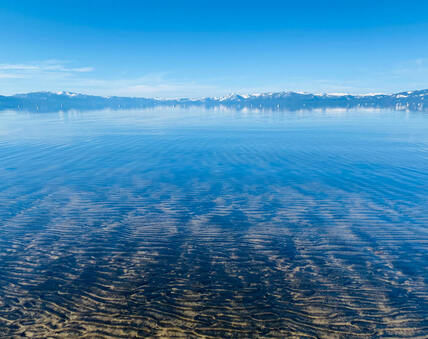
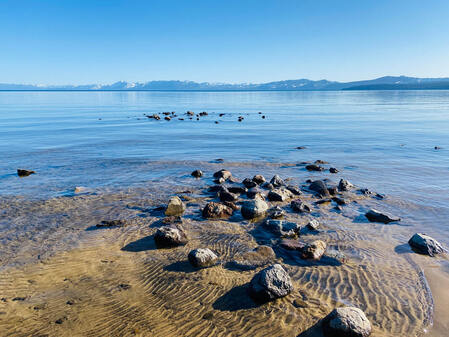
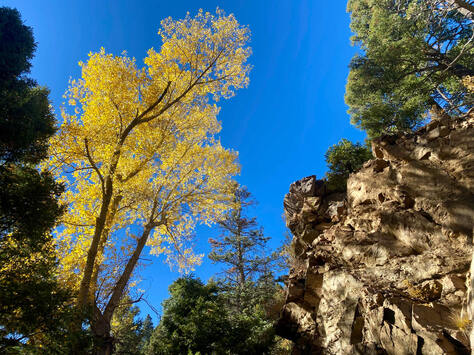
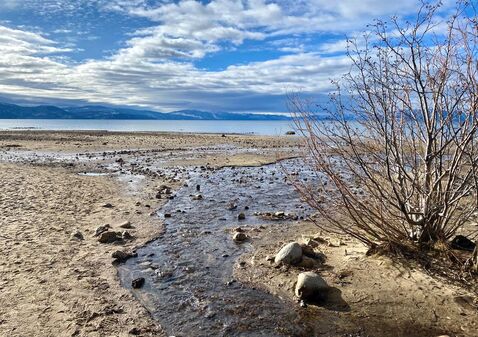
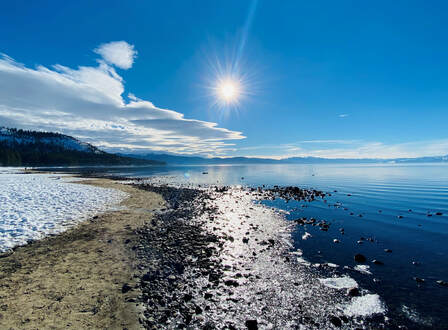
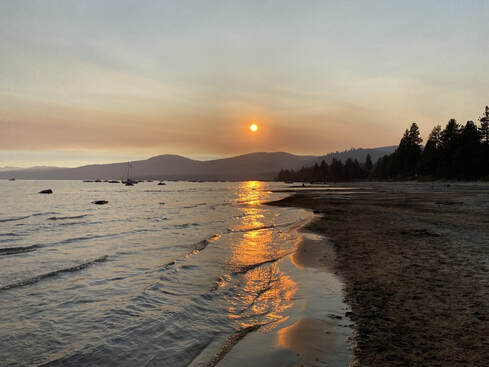
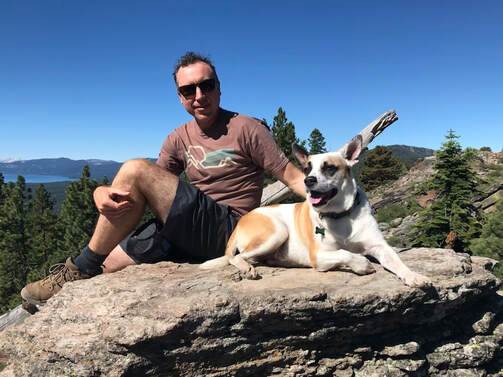
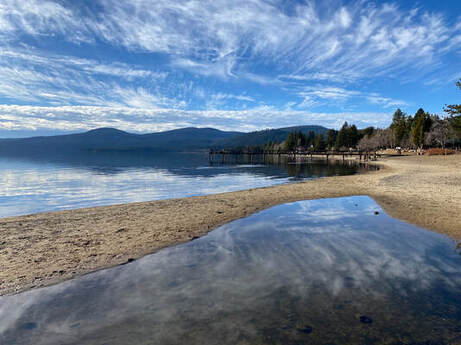
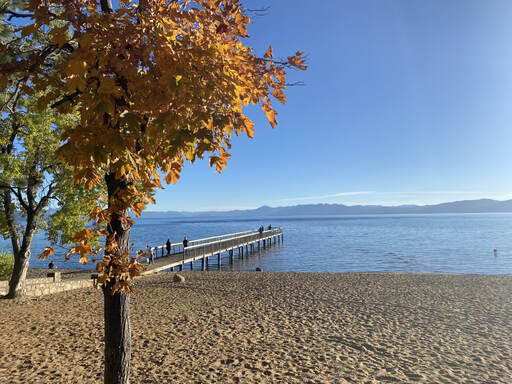
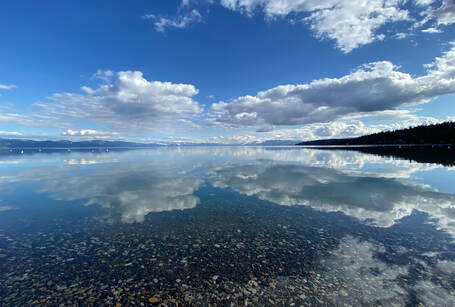
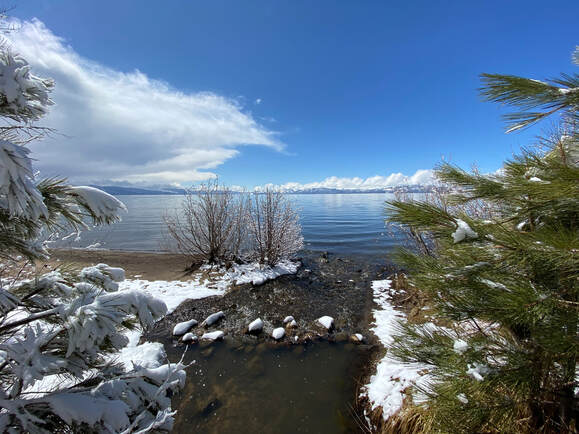
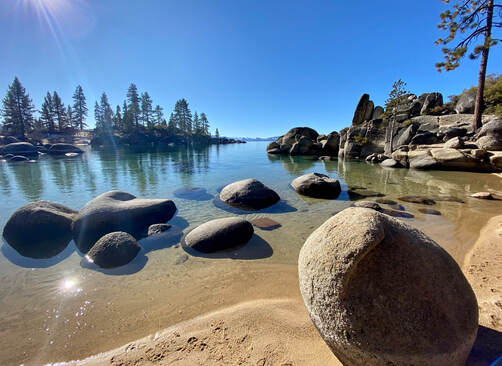
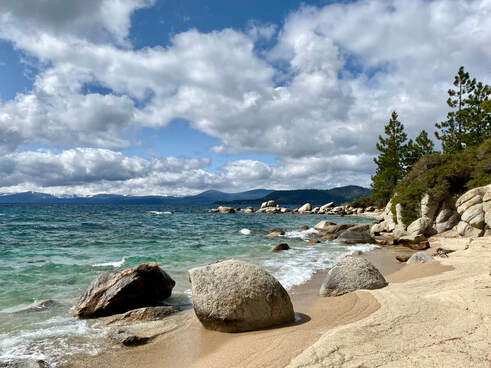
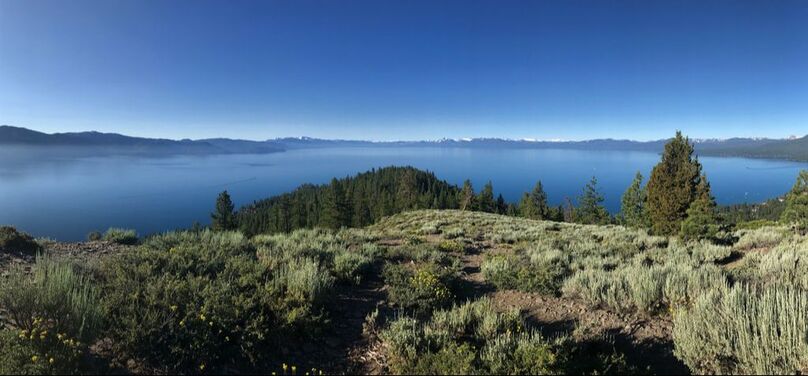
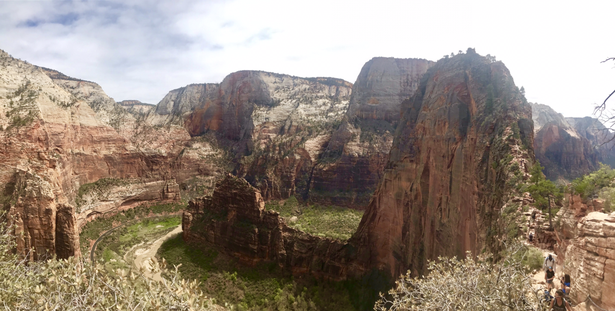
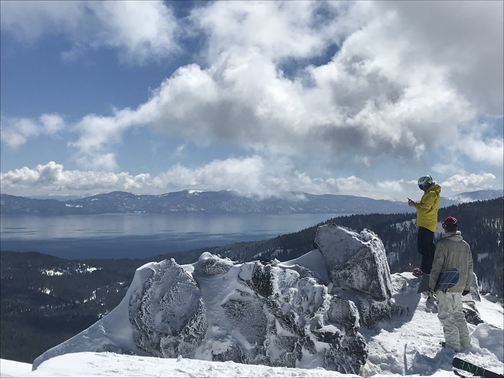
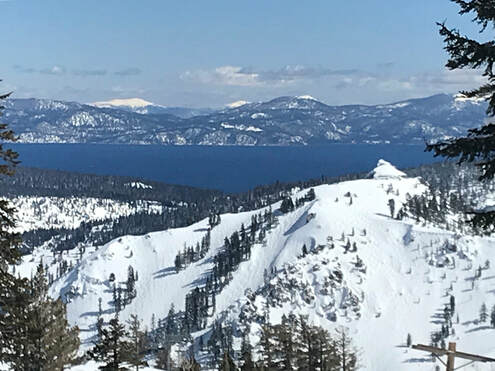
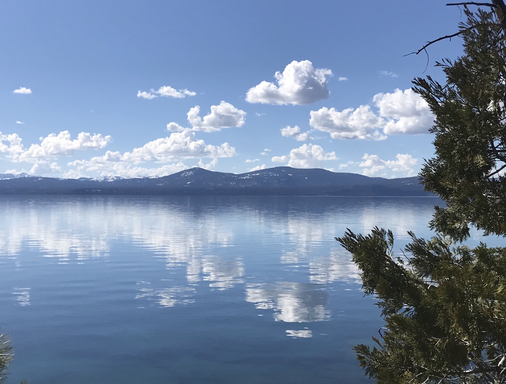
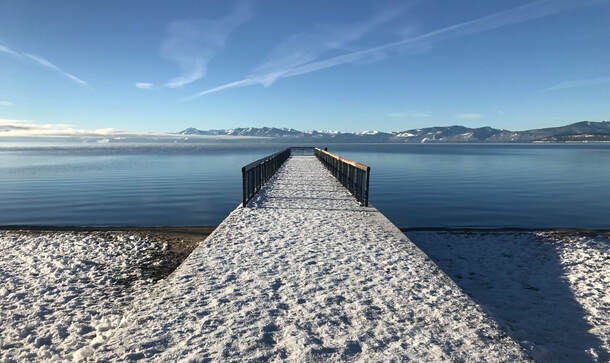
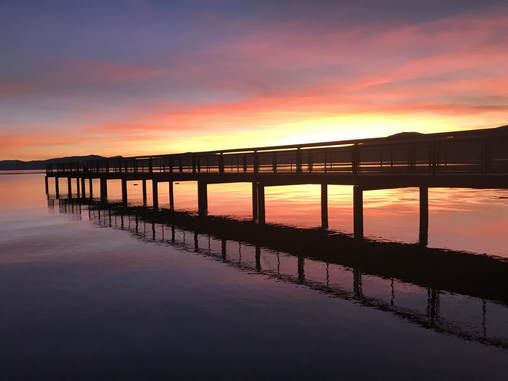
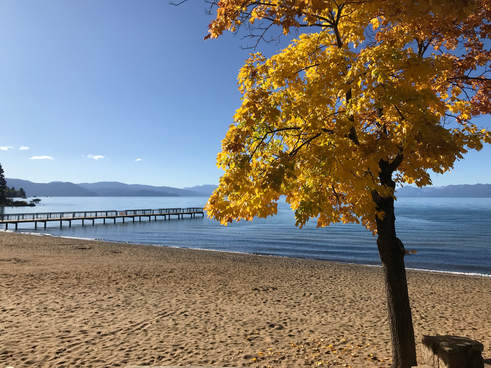
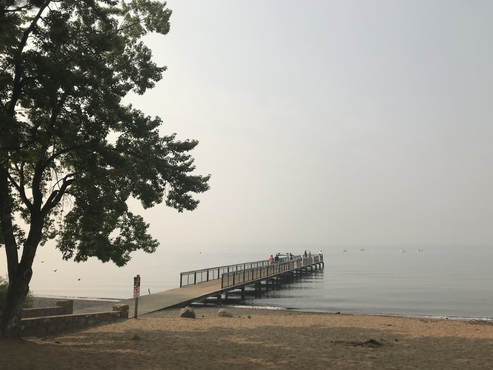
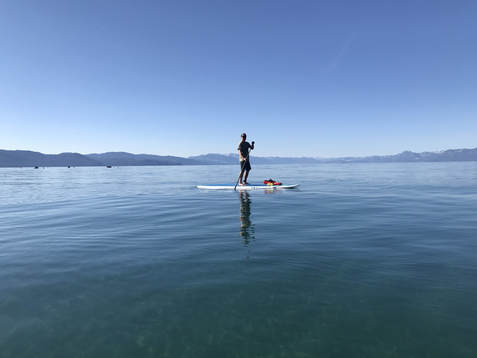
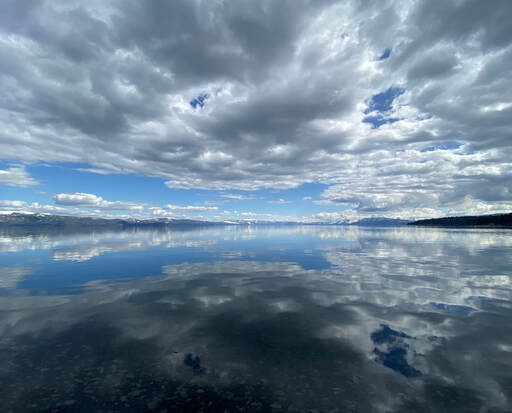
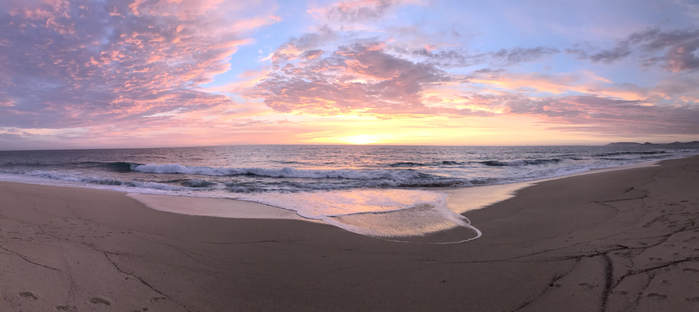
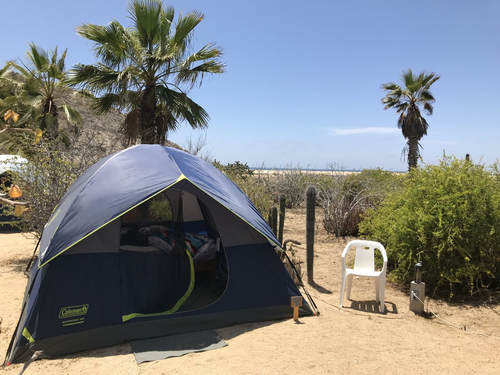
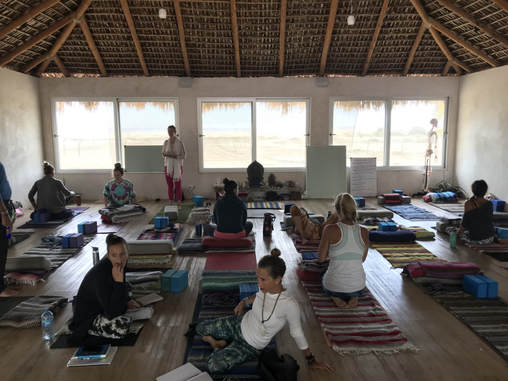
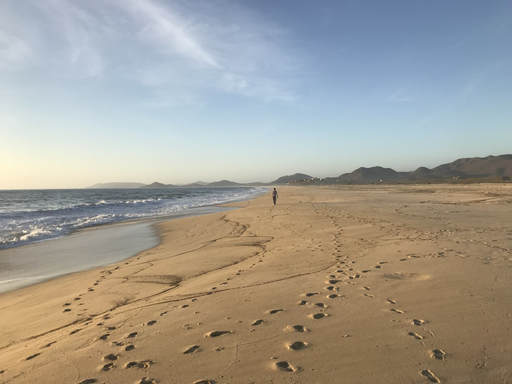
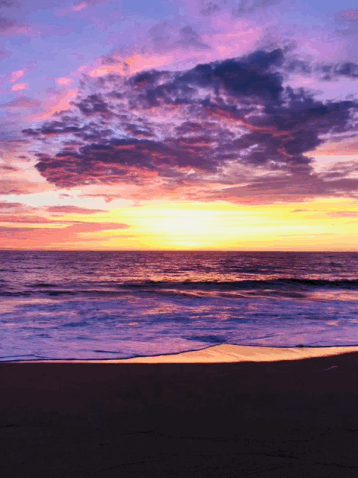
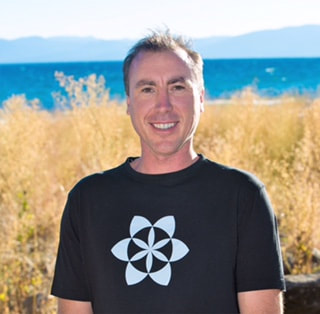
 RSS Feed
RSS Feed